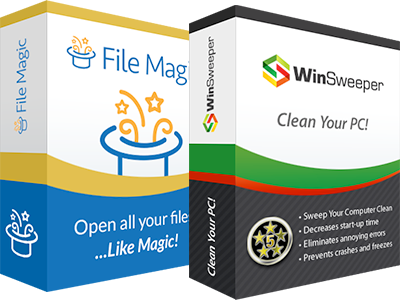FileMagic is a robust and user-friendly file viewer designed to open, read, and interpret a wide variety of file types—from common formats to highly specialized or obscure extensions that most applications cannot handle. With FileMagic, users can quickly gain access to the inner contents of files without needing to download multiple programs or worry about compatibility issues. It’s a must-have tool for digital artists, developers, technical professionals, educators, and curious users alike. One of the most notable advantages of FileMagic is its ability to support DSO files, a format commonly encountered within the DAZ Studio ecosystem as well as in certain programming environments, depending on the context in which the file is used.
DSO files in the DAZ Studio environment refer to compiled shader object files. These files are typically created as part of the rendering process and serve as optimized, binary versions of shader programs written in DAZ Script or Shader Mixer. In DAZ Studio, shaders control the way surfaces appear under lighting, including reflections, glossiness, subsurface scattering, and other material properties. The DSO file stores precompiled instructions that enable DAZ Studio to render these effects more efficiently. These files are often generated automatically during scene setup or rendering and are rarely opened or examined directly—making them somewhat mysterious to users who encounter them in their project directories. With FileMagic, however, that mystery disappears.
When a user opens a DSO file in FileMagic, the program decodes the structure of the binary content and presents it in a readable, organized format. Even though DSO files are not plain-text and are not meant to be edited directly, FileMagic allows users to gain insight into what each DSO file does, what shaders or scripts it references, and how it contributes to the visual output of a scene. This is incredibly useful for digital artists and technical users who are troubleshooting render issues, analyzing asset performance, or verifying whether a shader has compiled correctly.
For shader developers and content creators, FileMagic offers a lightweight, secure way to inspect DSO files generated by their own shader code. By reviewing the compiled output in FileMagic, creators can verify whether their changes to a DAZ Script or Shader Mixer graph have translated properly into the compiled file. It’s also a useful tool for tracking down errors or inconsistencies that may appear between different versions of the same shader. Rather than blindly regenerating DSO files every time a change is made, developers can use FileMagic to compare existing files and pinpoint what has changed at the compiled level.
In collaborative 3D production environments, DSO files often get passed around along with scene files, texture maps, and geometry. Without context, a DSO file might seem irrelevant or out of place—but it can be critical for rendering the final appearance of a character, prop, or environment. FileMagic allows project leads, technical directors, and asset managers to open these files and understand what they are, how they were generated, and whether they need to be included in a render or export package. This supports more efficient project management and ensures that important shader files are not overlooked during scene transfers or backups.
In educational settings, FileMagic serves as an excellent tool for teaching students about shader compilation and optimization. When working with Shader Mixer or custom DAZ scripts, instructors can use FileMagic to show students what happens after the script is compiled into a DSO file. Students can explore these files without altering them, gaining an appreciation for the rendering pipeline and learning how the underlying code translates into executable render instructions. FileMagic’s safe, read-only environment ensures that educational exploration never compromises the integrity of actual project files.
Outside of the DAZ Studio context, the DSO file extension is also used in programming and software development, particularly in environments like C++ where DSO can refer to “Dynamic Shared Object” files. These are similar to dynamic-link libraries (DLLs) in Windows and are used by Linux or UNIX-based systems to store compiled code that can be loaded at runtime. In this context, DSO files enable modularity and efficiency, allowing developers to update individual components of a program without recompiling the entire application. While these types of DSO files are typically used in programming workflows, they can be confusing for users who find them in application folders or when dealing with open-source software.
For developers and system administrators who encounter these types of DSO files, FileMagic offers an easy way to inspect the file and determine its contents. Rather than relying on command-line tools or complex debugging environments, FileMagic provides a quick and clear overview of the file’s metadata, versioning information, and any embedded strings or code references. This is useful for verifying dependencies, ensuring compatibility across systems, and reviewing third-party components in software distributions. It also makes it easier to identify the purpose of a DSO file in a large codebase or during a system audit.
FileMagic’s broad compatibility with related file types enhances its usefulness in these technical workflows. Alongside DSO files, users may be dealing with source code files, compiled object files (.o), shared libraries (.so), and configuration files. FileMagic supports a wide range of these formats, making it the ideal single platform for exploring project files in software development, 3D modeling, or cross-disciplinary environments. This versatility helps users maintain productivity and keep their workspace organized, even when switching between creative and technical tasks.
One of FileMagic’s most appreciated features is its strict read-only mode, which ensures that users can open and inspect any supported file without changing it. This is particularly important when working with DSO files, as these are typically compiled outputs that should not be manually edited. By preventing modifications while still offering deep insight into file contents, FileMagic protects users from accidental corruption or misconfiguration while still enabling them to troubleshoot and analyze files effectively.
If you beloved this article and you would like to receive much more details regarding best DSO file viewer kindly stop by our own page. Additionally, FileMagic’s simple drag-and-drop interface, fast load times, and clean layout make it suitable for users of all experience levels. Whether you’re a professional shader developer or a DAZ Studio hobbyist trying to understand why a surface isn’t rendering properly, FileMagic gives you the tools to inspect the DSO files behind the scenes and find your answers. The software removes technical barriers, offering insight where previously there was only confusion.
 In summary, FileMagic is the go-to solution for anyone working with DSO files. Whether you’re in the DAZ Studio ecosystem inspecting compiled shader files, or in a software development environment handling dynamic shared objects, FileMagic provides a fast, secure, and intuitive way to open and understand these complex file types. With its read-only architecture, broad format support, and user-friendly interface, FileMagic empowers users to take control of their files, eliminate guesswork, and streamline their workflows. DSO files no longer need to be mysterious or inaccessible—with FileMagic, they become just another file you can easily open, understand, and manage.
In summary, FileMagic is the go-to solution for anyone working with DSO files. Whether you’re in the DAZ Studio ecosystem inspecting compiled shader files, or in a software development environment handling dynamic shared objects, FileMagic provides a fast, secure, and intuitive way to open and understand these complex file types. With its read-only architecture, broad format support, and user-friendly interface, FileMagic empowers users to take control of their files, eliminate guesswork, and streamline their workflows. DSO files no longer need to be mysterious or inaccessible—with FileMagic, they become just another file you can easily open, understand, and manage.
